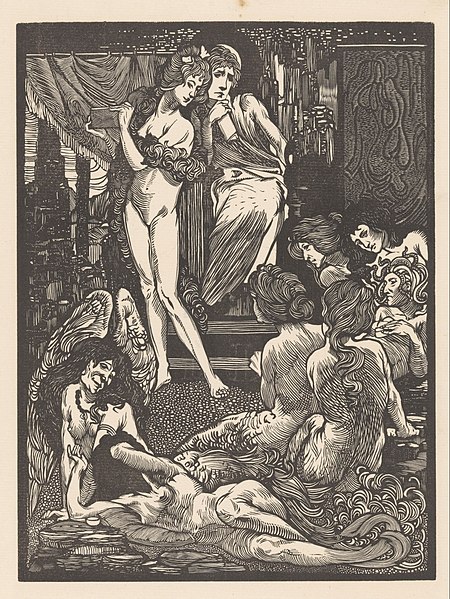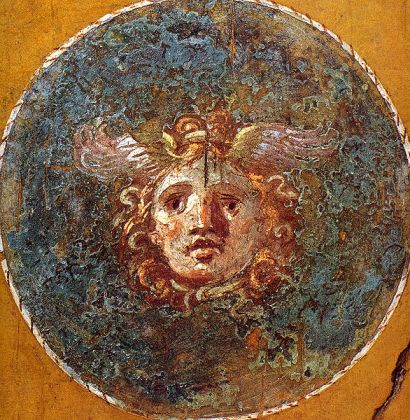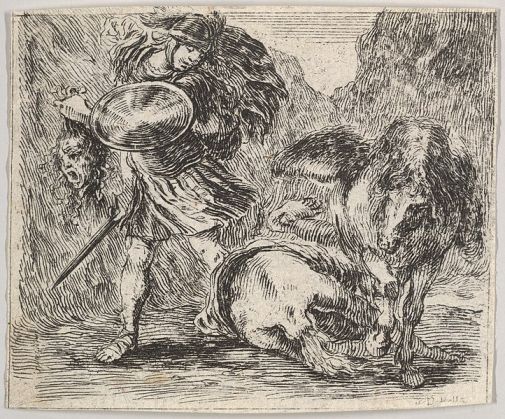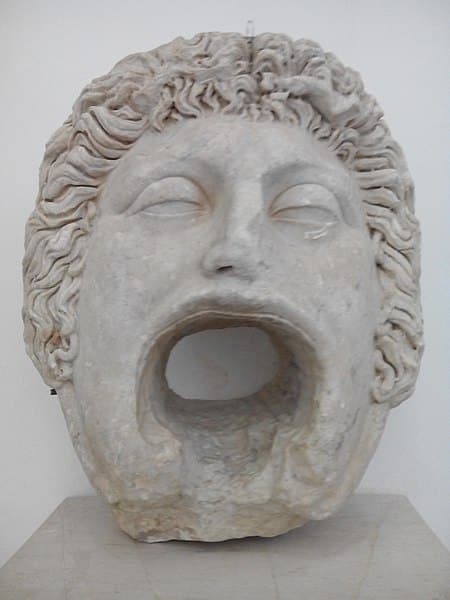Ah, the Gorgons—those mythical creatures that have captured imaginations and haunted dreams for centuries. You’ve probably heard of Medusa, but did you know she had sisters? In this article, we’ll delve into the labyrinthine world of these enigmatic figures, exploring their origins, characteristics, and the myths that have immortalized them.
Gorgons Key Facts
| Keyword | Facts |
|---|---|
| Parents | Phorcys and Ceto |
| Defeated by | Perseus (Medusa) |
| Habitat | Far Western Ocean |
| Other names | None |
| Roman name | Gorgones |
| Associated with | Death, Petrification |
| Symbols | Snakes, Shield, Petrifying Gaze |
Name and Etymology
The term “Gorgon” is derived from the ancient Greek word “Gorgós,” which means “dreadful.” While the Roman name remains quite similar—Gorgones—the essence of dread and terror encapsulated by these creatures remains unchanged across cultures.

The Gorgons are primarily known by their individual names: Medusa, Stheno, and Euryale. Each name carries its own weight and meaning. For instance, Medusa means “guardian” or “protectress,” a cruel irony considering her fate.
The epithets and other names for the Gorgons are scarce, as they are most commonly referred to by their individual names. However, they are sometimes collectively called “Phorcydes,” after their father, Phorcys.
Gorgons Origin and Creation
The Gorgons are the daughters of Phorcys and Ceto, ancient sea deities. Born into a family of monsters, they were destined for notoriety. While Medusa was initially a beautiful maiden, her sisters were born as Gorgons, complete with their terrifying features.
The purpose of their existence seems to be a cautionary tale of sorts; they serve as a grim reminder of the consequences of hubris and the wrath of the gods. Medusa, in particular, was transformed into a Gorgon as punishment for her vanity.
Their early existence is shrouded in mystery, but it’s clear that they were feared from the get-go. They resided in the farthest corner of the Western Ocean, a fittingly remote habitat for creatures so dreadful.
Depiction And Characteristics

The Gorgons are most famously depicted with snakes for hair, a feature that has become synonymous with them. Their visage was said to be so terrifying that it could turn onlookers to stone. Medusa, the most famous of the trio, is often shown with a head full of writhing serpents and a gaze that could petrify even the bravest of souls.
Their overall appearance is a blend of horror and fascination; they are usually shown with large, glaring eyes, wide mouths filled with fangs, and sometimes even with scales covering their bodies. They are the epitome of the monstrous feminine, a concept deeply rooted in ancient beliefs.
Gorgons Nature and Behavior
The Gorgons were not just mindless monsters; they were cunning and vengeful. They were known to be fiercely protective of their lair and would pursue any intruders relentlessly. Their reputation was so fearsome that they became symbols of protection; paradoxically, Gorgon images were often used as talismans to ward off evil.
Their behavior in myths often reflects the ancient Greek fear of the unknown and the chaotic. They were considered the antithesis of human order and rationality, embodying the wild, untamed aspects of nature and the cosmos.
Gorgons Abilities
The most infamous ability of the Gorgons is their petrifying gaze. Just one look from them could turn a person into stone, making them formidable opponents. This power is most closely associated with Medusa, but her sisters were no less terrifying.
Additionally, they were virtually invincible. Stheno and Euryale were immortal, and Medusa could only be killed in a specific manner—by beheading her without looking directly at her. Their near-invulnerability made them subjects of both awe and terror, cementing their place in myths as creatures of formidable might.
Gorgons Symbols
The Gorgons are closely associated with snakes, which symbolize both death and rebirth. This duality reflects their nature as creatures both feared and revered. The snake association likely stems from ancient chthonic beliefs, linking the Gorgons to the underworld.
Another symbol closely associated with them is the shield, particularly Medusa’s head on the shield of Athena. This association serves as a testament to their fearsome nature; even in death, they could ward off evil and offer protection.
Play Gorgons Quiz
How well do you know Gorgons and other Greek monsters? Play this game to find out!
If you enjoyed this game, there are many more games on our website! Try them!
Myths about the Gorgons
Let’s delve deeper into the myths that have shaped our understanding of these enigmatic sisters, starting with Medusa’s tragic transformation, moving on to the lesser-known sisters, and culminating in the famous tale of Medusa’s demise.
Medusa’s Transformation: A Tale of Beauty and Betrayal
Medusa wasn’t always the snake-haired monster we’ve come to know. Originally, she was a beautiful maiden, a priestess in the temple of Athena. Her beauty caught the eye of Poseidon, the god of the sea, leading to a liaison that enraged Athena. As a result, the goddess transformed Medusa into a Gorgon, making her so hideous that anyone who looked at her would turn to stone.
This transformation serves as a cautionary tale about the consequences of angering the gods, but it also highlights the complexities of divine justice—or perhaps the lack thereof. Medusa’s punishment seems disproportionate to her actions, raising questions about victim-blaming and the role of women in ancient myths.
The Lesser-Known Sisters: Stheno and Euryale
While Medusa often steals the limelight, her sisters Stheno and Euryale are equally intriguing. Born as Gorgons, they were immortal and shared many of Medusa’s fearsome traits. Unlike Medusa, however, they were not subjected to a transformation; they were Gorgons from birth, embodying terror and dread from the get-go.
The myths surrounding Stheno and Euryale are sparse, but what we do know paints them as relentless and vengeful. After Medusa’s death, they pursued Perseus with a fury that could only come from sisterly love and loss. Their immortality made them even more terrifying, as they could not be defeated—only avoided.
The End of Medusa: Perseus’ Daring Feat

The most famous myth involving a Gorgon is, of course, the tale of Perseus and Medusa. Tasked with bringing Medusa’s head to King Polydectes, Perseus received divine gifts to aid him: a mirrored shield from Athena, a sword from Hermes, God of All Trades, and winged sandals from the gods. These tools allowed him to venture into the Gorgons’ lair without falling victim to their petrifying gaze.
Using the mirrored shield to avoid direct eye contact, Perseus beheaded Medusa. From her severed neck sprang Pegasus, the winged horse, and Chrysaor, a giant wielding a golden sword. Medusa’s head retained its petrifying power even in death, and Perseus used it as a weapon before giving it to Athena, who placed it on her shield.
This myth not only serves as an epic tale of heroism but also as a study in contrasts. Medusa, once a victim, becomes a fearsome antagonist, yet her head becomes a symbol of protection. Perseus, the hero, uses cunning and divine aid to defeat an almost invincible foe, highlighting the themes of ingenuity over brute force.
Medusa and the Birth of Pegasus
One fascinating aspect often overlooked is the birth of Pegasus, the winged horse, and Chrysaor, a giant wielding a golden sword, from Medusa’s severed neck. This event occurs right after Perseus beheads her, adding a layer of complexity to her character. Even in death, Medusa gives life to other mythical beings, contributing to new myths and legends. Pegasus, in particular, goes on to have his own adventures and becomes a symbol of poetic inspiration.
Medusa and Athena’s Aegis
After her death, Medusa’s head was placed on Athena’s shield, known as the Aegis. This wasn’t just a trophy; it served as a powerful protective symbol. The head retained its petrifying power, making the shield one of the most fearsome weapons in Greek mythology. This incorporation into Athena’s Aegis elevates Medusa from being merely a monster to be slain; she becomes an enduring symbol of awe and divine power.
Representations Of Gorgons In Art
The Gorgons have been a popular subject in art, especially during the classical period. Medusa’s head, in particular, has been depicted in various forms, from sculptures to paintings. One of the most famous is Caravaggio’s “Medusa,” a stunning painting that captures both her horror and beauty.

Their visages have also been used in architecture and talismans, serving both as decorative elements and symbols of protection. The duality of their nature—terrifying yet protective—has made them enduring subjects in the world of art.
Mentions in Ancient Texts
The Gorgons, particularly Medusa, have been mentioned in a variety of ancient texts, each contributing to the rich tapestry of myths and interpretations surrounding these enigmatic figures. Let’s delve into some of the most notable mentions.
Hesiod’s “Theogony”
One of the earliest mentions of the Gorgons can be found in Hesiod’s “Theogony,” a poetic account of the origins and genealogies of the gods. Written around the 8th century BCE, this text describes the Gorgons as the daughters of Phorcys and Ceto, sea deities from the ancient world. Hesiod doesn’t delve into individual stories but sets the stage for their mythological background. He writes, “And to Phorcys, Ceto bore… the Gorgons who lived beyond glorious Ocean in the frontier land towards Night.”
Ovid’s “Metamorphoses”
Ovid’s “Metamorphoses,” written in the 1st century CE, provides a more detailed account of Medusa’s transformation. This Roman text delves into the tragic tale of how Medusa, once a beautiful maiden, was transformed into a Gorgon by Athena. Ovid writes, “Her hair that the Graces had arranged was changed into horrible snakes.” This line captures the essence of Medusa’s transformation, serving as a poignant reminder of her tragic fate.
Homer’s Brief Mention in the “Odyssey”
While not as detailed as other accounts, Homer’s “Odyssey” briefly mentions Medusa in the context of the underworld. In Book 11, the hero Odysseus, The Cunning Hero Of The Trojan War is warned that he will encounter “the Gorgon’s head,” a clear reference to Medusa, during his journey through Hades, the god of the underworld. Although she doesn’t play a significant role in the epic, her mere mention adds a layer of dread and danger to Odysseus’s journey.
Pseudo-Apollodorus’ “Bibliotheca”
In the “Bibliotheca,” attributed to Apollodorus, we find a more systematic account of myths, including that of the Gorgons. This text provides a comprehensive look at their genealogy and the myths surrounding them, including the tale of Perseus. It states, “He [Perseus] flew to the ocean and caught the Gorgons asleep.”
Frequently Asked Questions
The Gorgons are most famous for their petrifying gaze, which can turn anyone who looks at them into stone. They are also nearly invincible, with Stheno and Euryale being immortal.
They resided in the farthest corner of the Western Ocean, a remote and fitting habitat for such fearsome creatures.
The Gorgons are the daughters of Phorcys and Ceto, ancient sea deities.
Yes, the Gorgons—Medusa, Stheno, and Euryale—are sisters.
Snakes are closely associated with the Gorgons and symbolize both death and rebirth, reflecting their dual nature as creatures both feared and revered.
Only Medusa was defeated and killed by Perseus. Her sisters, Stheno and Euryale, were immortal and could not be killed.
So there you have it—the Gorgons in all their terrifying glory. These mythical sisters have fascinated and horrified us for centuries, and their legacy is far from turning to stone.
Featured Image Credit: Caravaggio, Public domain, via Wikimedia Commons
